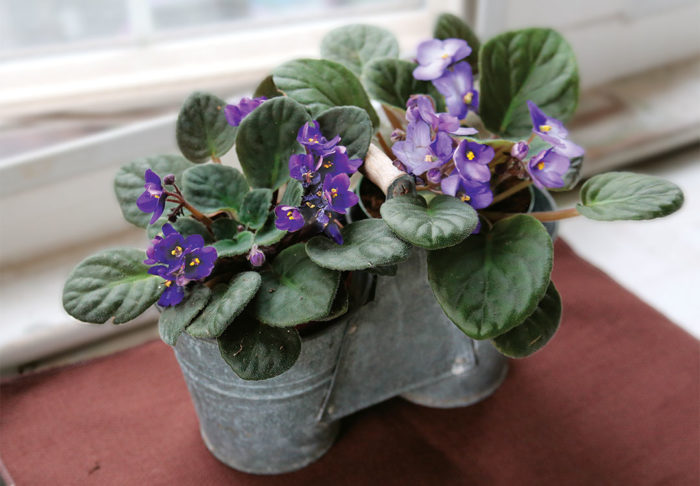
If you hear “African violet” and think “grandmother,” we need to talk. There’s no reason why you should flash immediately to frumpy when that family of plants is mentioned. The fact is, the association between members of the Gesneriad family and doilies needs to be updated. Ditto for the assumption that African violets are difficult. Sure, you can fuss and pamper these plants if it makes you happy. But all that extra maintenance is not necessary.
The Gesneriad family is huge. According to the Gesneriad Society, it’s about 3,400 species strong, with a whole lot of diversity. Only one group—Saintpaulia, aka African violets— has reached superstar status. But then, in my opinion, all that brouhaha is warranted. From primrose-like rosettes of velveteen leaves, violet-lookalike flowers pop up. They’re adorable, to be sure. But the fact that they perform primarily in autumn and winter when we’re starving for colorful houseplants is what really sent their rising star into orbit. As soon as homes became reliably warm night and day (in other words, when central heating systems gained popularity), African violets became fixtures on the windowsill. Their cheerful color range, which includes electric blue and shades of pink, certainly didn’t hurt. Based on their performance, African violets have waltzed in and out of the limelight ever since, including a major spike in the 1950s with the tea and crumpet crowd. And they show signs of surging again.
Maybe your grandmother coddled her African violets because she had too much time on her hands, because they really don’t need it. Watering them from below certainly doesn’t hurt, but it isn’t necessary if you use tepid water and aim the spout away from the foliage. Water when the soil is lightly dry but not parched, and do not drown the poor things. A container with good drainage is key. An east or west window works fine; you don’t want to bake the plants in the direct light of a south window or give them the dark treatment of a northern exposure. Both extremes lead to lack of flowers.
Although the sailor blue and pink of yesteryear were certainly sufficiently riveting, the color range has increased to include purples, reds, and maroon. Green accents are an option. Plus, spots, streaks, banding, fringing, and flouncy double-flowering versions are now readily available. (Your grandmother would palpitate.) To encourage reblooming, keep them deadheaded. Whisking faded flowers away immediately prods them into pumping out blossoms. African violets can tolerate temperatures that slip down to 55°F at night, but they prefer slightly warmer temperatures. And like most plants (except succulents), they do not like a Sahara-dry atmosphere. If your lips are getting chapped, run a humidifier. Or set your pots on a 1-inch layer of gravel that’s half-filled with water.
Meet the cousinsThere are more arcane members of the African violet clan that qualify as great cohabitating candidates. Several have a trailing habit, but if growing in a hanging basket doesn’t work for you (and quite honestly, the care and watering of something dangling around your home perplexes many of us on a practical level), just set the container on a pedestal and let the lax stems drape down. ▸ Codonanthe Tidy thumbnail-size, forest-green leaves with a matte surface are dappled with cream, white, or ballet-slipperpink blossoms. And codonanthe is fairly ironclad. 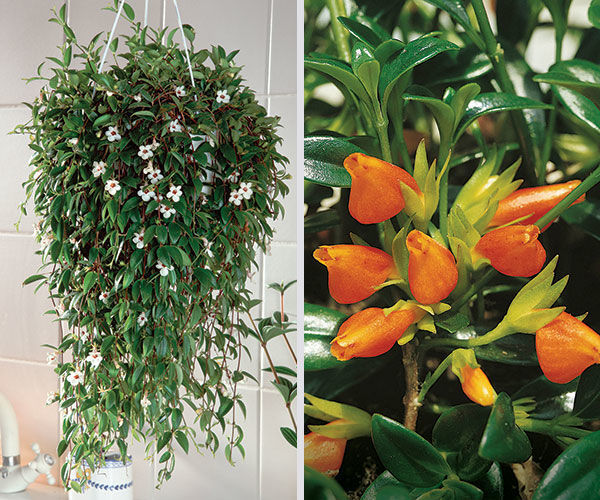 ▸ Nematanthus Leaves shine against blossoms that are guppy-shaped and bright orange in profusion. 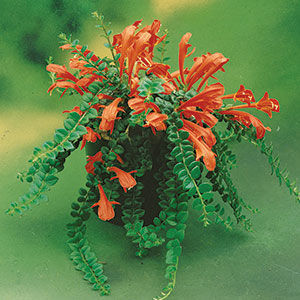 ▸ Columnea A little more finicky, with long limp chains of leaves accompanied by a string of brightly colored gaping flowers, these plants prefer warm temperatures and careful watering that doesn’t splatter the leaves. I say leave them to the experts. ▸ Aeschynanthus Dragonlike, plush, gaping tubular flowers in shades of orange and red stand out against smooth, deep green leaves.
|
African violets definitely have mainstream appeal, but other members of the Gesneriad clan have also flirted with fame for good reason. Right now, Cape primrose (Streptocarpus spp. and cvs.) is second in popularity, despite a Latin name that sounds like it might require antibiotics. With long, velvety leaves and relatively large tubular flowers, streps have the wow factor. And they’re sufficiently compact to host on your average windowsill without bogarting precious space. The only issue is cold tolerance. If you turn the thermostat down below 60°F at night, streps are not going to be happy. An unhappy strep doesn’t hang around long to protest. It just perishes.
Instead, go with a Primulina (formerly Chirita) if your home isn’t consistently toasty. It’s got the same sort of configuration as Cape primrose, but with a growth habit that can get a little stretchy rather than holding that tight rosette. But that’s the trade-off for a plant that produces blossoms even when you throw on sweaters. Basically, if you’re comfortable in your home without an overcoat, your Primulina will be ducky.
Fads in gesneriads come and go. For a while, flame violets (Episcia spp. and cvs.) were all the rage due to their patterned leaves with combinations of silver, brown, green, pink, raspberry, and green markings. In addition, they also produce prolific blossoms, which add to the display. However, they tend to pout without terrarium-like humidity. Gloxinias (Gloxinia spp. and cvs.) used to be popular for their immense tubular blossoms, but many indoor gardeners found the fact that they go completely dormant in summer disconcerting. Ditto for Achimenes, which blossoms prolifically in a broad range of colors on trailing stems but performs only in summer and goes dormant in winter. And do you remember the micro-mini Sinningia fad when folks were torturing the tiny plants in thimbles? Their tendency to go dormant also spelled demise for that craze.
Although you might see a smattering of flowers at other times of year, many members of the African violet clan really go gangbusters in autumn. To gear up for that extravaganza, treat them like royalty during the summer with even moisture (but not overwatering) and fertilizer (I use fish emulsion) once every three weeks until Thanksgiving, and then pause with feedings until spring, when light increases again and the plants need food. Do not go crazy with generous pot promotions; African violets prefer cramped root systems. They also prefer shallow containers rather than deep pots, because their roots grow horizontally rather than straight downward. When repotting, use a light, peaty potting soil rather than mediums that have the consistency of concrete. And avoid chilly water when serving drinks.
It’s time to bring African violets up to speed. With a little finesse, they could and should be major players in the current trend toward growing plants indoors. If you need color on your windowsill when the growing season fizzles outdoors, these are great candidates. Update the look, and they could bring autumn and winter from “blah” to “ahhhh” in a blink. You need these plants close by.
– Tovah Martin is the author of several books on houseplants, including The Unexpected Houseplant: 220 Choices for Every Spot in Your Home.
This article originally appeared at Getting Real with African Violets in Issue 190 of Fine Gardening Magazine.

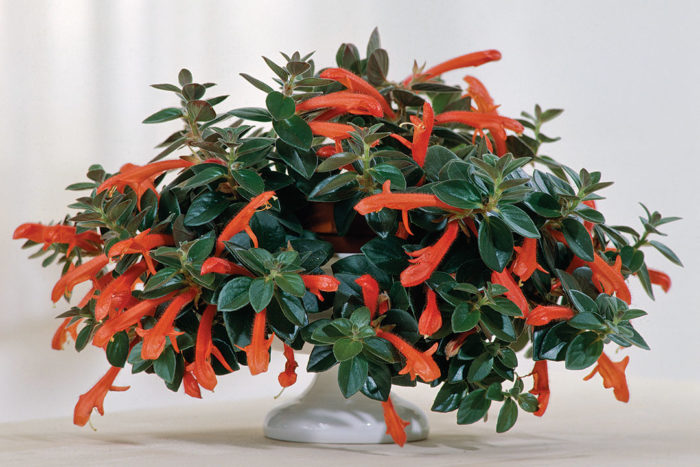

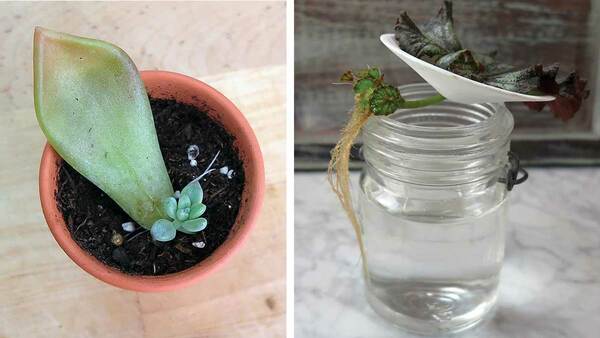














Comments
Beautiful!
Log in or create an account to post a comment.
Sign up Log in